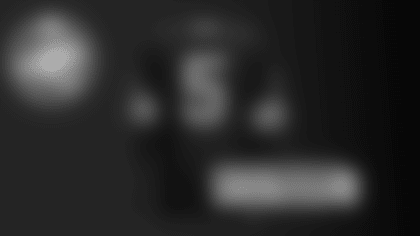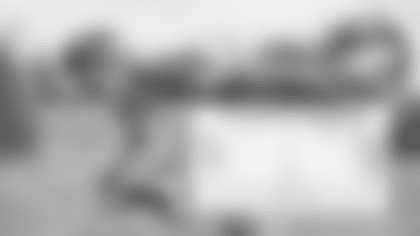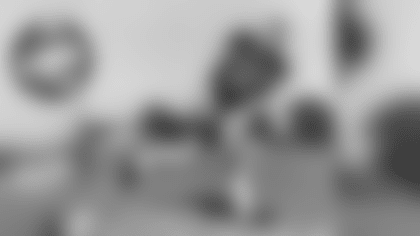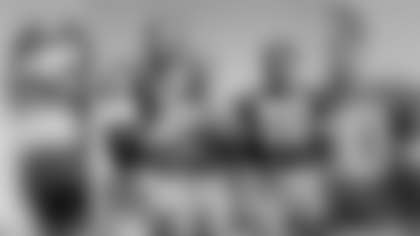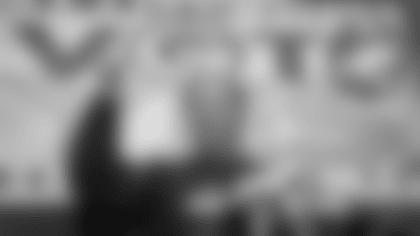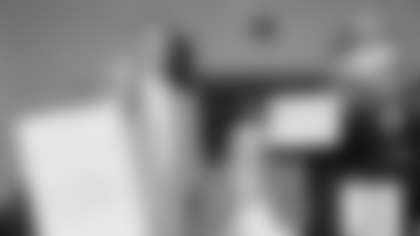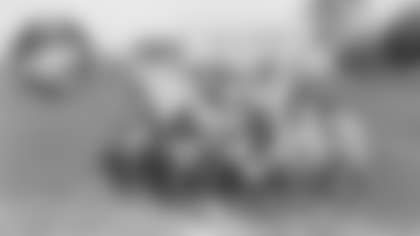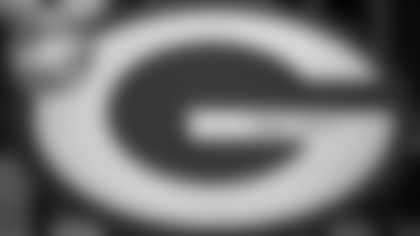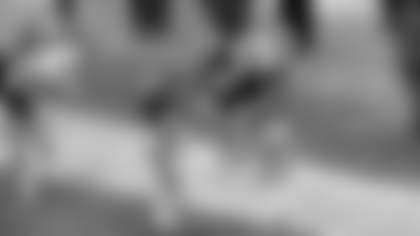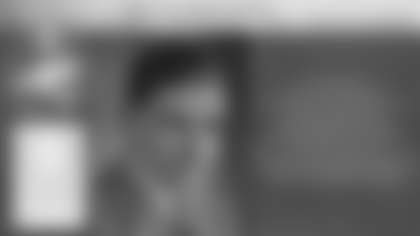Carlos from Los Angeles
What did you make of the black 1957 Paul Hornung jersey that was sold earlier this year to the highest bidder on the internet?
During the bidding period last February, I said I wasn't sure what to think because I had to yet find a written description of the Packers' 1957 uniforms from a reliable source. Now, a little more than six months later, having done considerably more research, I believe the jersey was legit.
At the same time, based on an expert opinion and other shreds of evidence, I question whether the outer cloth of the jersey was black. Plus, I'm convinced the Packers never considered the jersey to be black back in 1957.
Yes, I get it. Hornung's jersey might look as black as black could be in the photo at the top of this post, just as it did when it was up for bidding by Heritage Auctions and sold for more than $100,000. And to be clear, for the sake of transparency, I haven't seen the jersey in person.
But more on the color later.
The biggest red flag for me when the jersey was put up for auction was not the color; it was the Denis Sport Shop label. And, truthfully, it still mystifies me why the Packers purchased their jerseys back then from a local sporting goods store other than Bertrand's.
Not long after Bertrand Sporting Goods opened in Green Bay in 1931, it started selling equipment to the Packers and soon thereafter became its main supplier. It was a relationship that continued for more than 50 years.
When I started covering the Packers as the Green Bay Press-Gazette's main beat reporter in 1974, store founder George Bertrand and his son Dick were fixtures in the Packers' equipment room then located adjacent to the team's locker room at the north end of Lambeau Field. In fact, my recollection is that either George or Dick or both were there on an almost daily basis, and their constant presence continued until at least the mid-1980s.
Bryan Nehring, our assistant equipment manager, also remembers the two Bertrands being in the equipment room regularly when he started working for the Packers as a student trainer in 1980, then as a seasonal trainer in 1983 and as an equipment assistant in 1986.
George Bertrand died in 1989 at age 91. Dick died in 1996 at age 62.
What's more, Bud Jorgensen, who served the Packers as equipment manager and trainer at various times from 1924-70, worked for Bertrand's in the offseason back when his positions with the Packers were seasonal. In some years during the 1950s, for example, Jorgensen's occupation was listed in the Green Bay City Directory as a salesman at Bertrand's and other years as athletic trainer for the Packers.
There's also evidence of Jorgensen being associated with Bertrand's during Hornung's rookie year. On Jan. 31, 1957, the Press-Gazette ran a picture of him strapping a pair of shoulder pads over Max McGee's Air Force uniform on the floor of Bertrand's store, then located on Washington Street in downtown Green Bay. McGee had missed the 1955 and '56 seasons while on Air Force duty and was in Green Bay to discuss rejoining the team.
Then there were George Bertrand's annual sporting goods parties and dinners for area football and basketball coaches, including the Packers' staff, as well as members of the press and radio and other celebrities. Described by Press-Gazette sports editor Art Daley as "strictly a no-speech, all-fun affair," the first party was held in 1950.
In 1952, Packers head coach Gene Ronzani and assistants Scooter McLean and Tarz Taylor attended. In 1954, the Packers' 1953 highlight film was shown with newly hired coach Lisle Blackbourn and aides Tom Hearden, Jack Vainisi, Jug Earp and McLean in attendance.
In June 1956, the event celebrated the Packers' hiring of Gerald "Dad" Braisher, who after coaching at De Pere High School for 33 years, had been hired to assist Jorgensen by overseeing the Packers' equipment room. The Packers staff was in attendance again at Bertrand's party at the Northland Hotel in 1957.
In a nutshell, it just seemed odd to me that considering those close ties between the Packers and Bertrand's the team would buy jerseys from its main local competitor, Denis.
Back to the colors.
In the 1957 National Football League Record and Rules Manual, the Packers listed their team colors as "Navy Blue, Green and Gold." Based on league minutes, teams were required to register their uniform colors starting in 1933.
At that time, another usually reliable clue regarding uniform colors were the names of the teams in the Packers' annual intra-squad game. Played that year on August 10 at Goerke Field in Stevens Point, the two sides were named Green and Gold. However, based on an Associated Press black-and-white photo of that game, the sleeves of the jerseys did not match what the Packers wore during the regular season.
As for a specific description of the Packers' 1957 uniform, an exhaustive search of the Press-Gazette, as well as official team publications, and executive committee and board of directors meeting minutes failed to yield anything about a possible purchase or the colors.
However, on Oct. 14, 1957, Chuck Johnson of The Milwaukee Journal wrote in his game story following the Packers' 45-17 loss to the Baltimore Colts the previous day at Milwaukee County Stadium, that, "The fellows in navy blue and gold, the home forces, tackled hardly at all."
What to make of all this?
Over the years, in the seasons when the Packers purchased new uniforms, the Press-Gazette almost always provided a description of them. Thus, if they wore new uniforms in 1957, considering how detail conscious Daley and colleague Lee Remmel were about such things, it certainly would have been out of character for them not to write about it.
Beyond that, based on black-and-white photos, the Packers wore jerseys in 1957 with the same exact sleeves as they did in 1956. In other words, that might explain why the Press-Gazette didn't describe the uniforms in 1957. They weren't new.
Here's what the Press-Gazette had reported on July 13, 1956: "The Packers will come out with arm numbers this season in accordance with a league rule which will make the new numeral identification mandatory by 1957. The numbers will be placed on both arms a few inches below the shoulder."
In other words, why buy new uniforms a year before a rule was going to become mandatory unless the plan was to wear those uniforms for at least two years?
As for the colors of the 1956 uniforms, here's what the Press-Gazette reported, when the players got to see them for the first time almost six weeks before the opener.
"They'll have two sets of helmets – white with a green stripe for use with white knit pants and green jerseys with white numbers and (the other helmet) gold with a navy stripe for use both with gold pants and navy jerseys with gold numbers."
Cutting to the core, the Packers had two sets of jerseys: one green, one blue.
They wore the green in the opener at old City Stadium against Detroit.
The next day, Oct. 1, 1956, Remmel wrote in his game sidebar that the Packers had "baptized their new uniforms" against the Lions. He described them as "dark Green jerseys with white arm bands, green sox, white trousers and white helmets with a single green stripe down the center."
With the Packers wearing dark jerseys in all 12 games that season and black-and-white photos from each game clearly showing a one-striped helmet, pants lighter than the jerseys, and sleeves with three stripes – a wide one in the middle with thinner ones at the top and bottom – along with a number above them, it's virtually impossible to determine when they wore blue and when they wore green.
Only the pants and the helmets offered a hint.
There were at least two games besides the opener – Nov. 11 against the Chicago Bears and Nov. 18 against San Francisco – where the helmets and pants looked white in black-and-white photos, just as they did in the opener. In at least five other games, the helmets and pants looked more grayish, indicating they may have been gold rather than white. The other four games were more inconclusive.
In 1957, when the NFL mandated that visiting teams wear white jerseys so viewers would see a contrast on their black-and-white televisions, the Packers wore dark uniforms for their six home games only.
Again, black-and-white photos were hardly conclusive, but the helmets and pants looked more grayish in more home games in 1957, indicating that the Packers might have worn the Hornung-like jersey more often than green-and-white that season – perhaps even in every home game.
When seeking answers about the history of uniforms, there's no better authority than Hank Derleth.
A junior end on the University of Wisconsin's 1959 Rose Bowl team and then co-captain of the 1960 Badgers, Derleth has been in the uniform business for more than 60 years. He started working with Sand-Knit in 1963 and has been a longtime supplier of Packers uniforms.
He also attended the Philadelphia College of Textiles and Science taking graduate courses to learn about yarn manufacturing, fabric analysis, knitting technology and textile quality control.
First, I asked him in a telephone interview what he knew about Denis' relationship with Sand- Knit in the late 1950s and why the Packers might have purchased uniforms from Denis rather than Bertrand.
Although he didn't start working for Sand-Knit until six years later, Derleth said he knew that Denis and Bertrand were both dealers before that. And while he noted that he was unaware of Denis ever supplying the Packers with uniforms, that didn't mean it didn't before he started working for Sand-Knit.
As an FYI, Denis, which opened in 1913 as primarily a bicycle shop, purchased Packers stock during the 1950 sale, so it had supported the team in that regard. Bertrand's had purchased stock when The Green Bay Packers, Inc., was formed in 1935.
Derleth also confirmed that Hornung, a big back at 6-foot-2½ and around 215 pounds, would have fit into a size 46 jersey with his shoulder pads.
Thereafter, the interview turned technical.
"I believe there is a strong possibility the jerseys are authentic, with the exception of calling them black," Derleth answered in an email. "The labels would verify the jerseys were made by Sand-Knit. Our company, Ripon Athletic, still holds the trademark rights to the name Sand-Knit. We occasionally still produce jerseys/uniforms with the Sand-Knit label. Unfortunately, we do not have any copies of production orders from that long ago. In talking with one of our retired knitters, he seems to remember making fabric for the Packers in a color called 'Midnight Navy.'
"The Packers wore Navy Blue jerseys during some years, my feeling is the jerseys in question are Midnight Navy not black and that they are real."
I then showed Derleth what Heritage Auctions had claimed about the color.
"We'll blow some minds here by reporting that this jersey is crafted from black durene – that's not faded navy," Heritage's website stated. "Before this jersey surfaced in the hobby, almost no Packers collectors were aware that the team ever sported these colors more commonly associated with the Pittsburgh Steelers. Muted yellow tackle twill forms the uniquely fonted number "5" found and chest, biceps and verso, and the loss of most of that rear numeral provides the strongest evidence that the jersey was originally jet black, as that fabric revealed by the loss is not faded like the rest of the jersey is. Yellow striping matching the numeral shade appears at each bicep."
Derleth responded.
"I don't think I disagree but perhaps can add a few details. From the information you have provided, I'm pretty sure the jersey is Sand Knit style #850B, the fabric was a single jersey knit construction using two yarns, knit in such a way called plating, where one yarn, 210 denier nylon was on the face of the fabric for strength/durability/color fastness/shine; the other yarn, 70/2's cotton 'Durene' was plated to the inside of the fabric for softer feel on the inside and to fill the fabric. This fabric and jerseys were commonly called 'Durene' jerseys back then. For most common colors like black, white, scarlet red, green, Sand Knit carried inventory in both the 210-nylon yarn and 70/2's cotton durene yarn. However, in lesser used colors like Navy, rather than carry inventory in 70/2's Navy cotton durene yarn, it was common practice to use black durene yarn on the back side of Navy or Midnight Navy fabric as it did not show on the surface and saved on carrying cost of Navy yarn.
"I suspect this could be the case here, or they were black jerseys. I can't say for sure unless we have one of the jerseys in hand. In one of the pictures you sent (from Heritage's website), it appears the yarn on the surface is a shade of dark Navy, the yarn on the inside of the fabric could be black which would help make the jerseys appear black."
Derleth's conclusion.
"Heritage describes the Hornung jersey as black. Regardless, I think the Hornung jersey is 'legit,' as it also has the correct #5 number font, but is actually Midnight Navy."
If the dark green jerseys from 1956 and/or 1957 were Midnight Green would that have had a black look too? *Here's the answer from AI.*
"What would a knit fabric with a Midnight Green nylon yarn face and black cotton durene yarn back look like? … The face of the fabric would be a deep, dark green with blue undertones, resembling the color of a forest or ocean at night."
One thing seems certain, the Packers never referred to those 1956 and/or 1957 jerseys as black. Before the 1956 season, Blackbourn, the Packers' coach at the time, said, "Our official club colors will still be blue, green and gold."
David from Coppell, Texas
I started the Lambeau bicycle tradition as a 12-year-old kid in 1958. I understand that kids rode players' bikes at the old City Stadium when the team played at the old East High School Stadium and also at the practice facility in Appleton, but when the new stadium (now Lambeau Field) held the first training camp in 1958, only players, coaches waited outside for players to suit up for practice. My favorite player was John Symank, and I pedaled up to him and asked if he'd like a ride down the hill to the practice field. He smiled, handed me his helmet and got on my bike. This was the start of the "Lambeau Bicycle Tradition" and there is no question about it. I was the only kid doing it. I rode up and down the hill ferrying players until they were all at practice. I've seen the photo of Hank Gremminger and Dan Currie riding bikes, but that backdrop behind them isn't Lambeau. It appears to be a stock photo chosen for the story. I'm turning 80 in a few months and if the team or writers want to finally acknowledge the start of the best tradition in professional sports, please contact me. I've been trying for decades to gain acknowledgment for this, but that pic of Currie and Gremminger keeps being used as contradictory evidence. I didn't even ask Coach McClain(sic) for permission to; I just gave rides to his players. But 1959 was a different story. Lombardi was the new coach and he intimidated me, so I rode up to him and asked if he minded if I kept giving rides to players. He said he didn't mind as long as nobody got hurt. And that is just a part of the real history of this tradition. It had multiple starts, but only one at Lambeau. Please contact me for more anecdotes and corroboration.
I've written about your claim in both “The Greatest Story in Sports: Green Bay Packers 1919-2019” and in a 2020 post at packers.com about the bike tradition. From my standpoint at least, that seems sufficient.
I trusted your word, at least to the extent that you were one of the first in 1958 to offer Packers players a ride to the practice field from the stadium's old locker rooms at the south end. Moreover, I didn't dismiss the possibility that you were the first.
We exchanged emails in 2018 when I was first shown the picture of two kids riding on the backs of bikes behind players Don McIlhenny and Bobby Dillon. When I asked if you were one of the kids, your initial response was, "I know the players, but not the kids." Subsequently, you wrote back that you had looked at the picture again on a larger computer screen and it might have been you, but that you weren't certain because the photo was too grainy.
I appreciated your honesty in answering both questions.
The picture of McIlhenny and Dillon ran in the Press-Gazette on Sept. 10, 1958, and the caption included the following request: "Anyone who knows who the boys are is asked to call the Sports Department, Press-Gazette."
Considering that's the first known picture of the bike tradition at what is now Lambeau Field that would have been the time to make a positive identification. It's now 67 years later. And based on your answers, it might have been you, it might not have been you.
That's not positive proof. And if it wasn't you, that means others were offering their bikes to players as well in 1958. In other words, there'd be no way today of proving who was the very first.
As for your contention that the picture of Gremminger riding a bike with Currie and Jim Temp walking alongside him is a stock photo because "that backdrop behind them isn't Lambeau" is false.
The photo was taken in the opposite direction of what was then new Green Bay City Stadium.
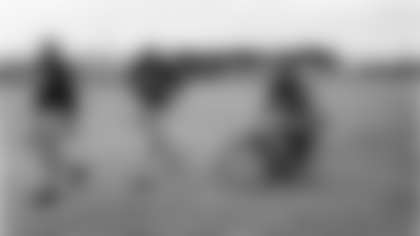
Mary Jane Herber, head of the Brown County Library Local History Dept., and I researched maps and city directories several years ago to determine if the houses in the background with vacant lots between them matched house numbers on Stadium Drive, circa 1958-60. And we concluded there was sufficient verification to confirm that the photo of Gremminger riding a bike with a kid behind him was legitimate.
The background of the photo was Stadium Drive, the first street south of the stadium.
Two other notes: Scooter McLean was coach of the Packers in 1958. "Coach McClain" – your reference – coached at the University of Wisconsin from 1978-85. Also, the Packers never had a practice facility in Appleton, but there is some evidence that the bike tradition might have started when the Packers trained in Stevens Point from 1954-57.



